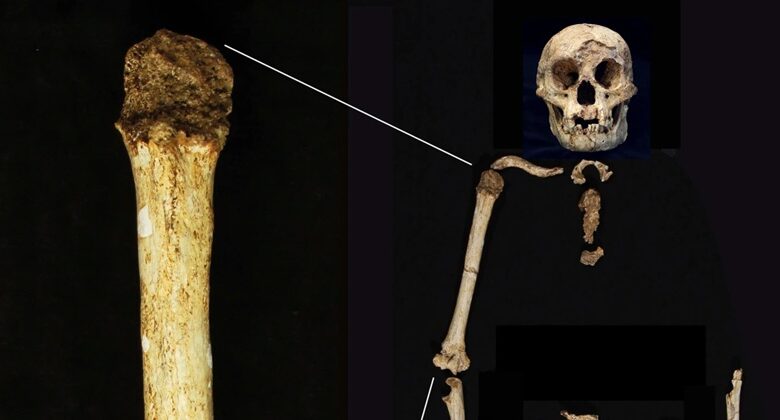700,000-year-old fossil verifies the presence of ancient, 3-foot tall ‘hobbit’ humans.
News Mania Desk \ Piyal Chatterjee \ 18th january 2025

Scientists have discovered the fossilized remains of a tiny ancient human in a remarkable find on the Indonesian island of Flores, providing new understanding into the enigmatic evolutionary path of the planet’s smallest known human species. The discovery, featuring a small arm bone from an adult, is thought to be from the species ‘Homo floresiensis’, commonly called the “hobbit” because of its notably diminutive height. This fossil, estimated to be 700,000 years old, represents the oldest evidence of the Homo floresiensis species, which inhabited Flores together with a variety of distinctive island wildlife, such as pygmy elephants and enormous rats.
Standing at only 1 meter tall, this ancient human’s small stature is believed to be a result of island dwarfism—a condition where species become smaller due to the specific environmental challenges found on isolated islands. “Island dwarfism was well known before from fossil remains of megafauna on islands in the Mediterranean and Indonesia, that were miniature versions of their mainland ancestors,” Dr. Gert van den Bergh, a palaeontologist at the University of Wollongong and a co-author of the study (in Nature Communications), explained.
“As long as animals are concerned, no one has a problem with island dwarfism, but when it comes to hominins it seems somehow more difficult to accept.”
Since the finding of the initial Homo floresiensis fossils two decades back, the species’ beginnings have been fiercely contested within the scientific community. Certain specialists have raised doubts about whether these small-statured individuals were genuinely a separate species or simply contemporary humans with a growth condition. Some have theorized that they were connected to a more primitive, smaller ape-like species.
The most recent finding, however, bolsters the hypothesis that Homo floresiensis evolved from Homo erectus, an ancient human species referred to as Java Man, which likewise lived in Southeast Asia. The small arm bone, anatomically akin to earlier identified Homo floresiensis skeletons, was discovered with a couple of tiny teeth that closely resemble those of Homo erectus, although considerably smaller. This 700,000-year-old adult humerus is not only shorter than that of Homo floresiensis, but it is also the smallest known upper arm bone from the hominin fossil record globally, according to the study. The idea of island dwarfism implies that reduced body sizes might provide a survival benefit in environments where resources are limited and predators are minimal. This evolutionary adjustment, although prevalent in animals, has proven challenging for some to embrace within the framework of human evolution.
In spite of this major discovery, uncertainties persist regarding how the ancestors of Homo floresiensis reached Flores. Archaeological findings, featuring stone implements, suggest that the island has been occupied for more than a million years. Nonetheless, the method through which these ancient humans, likely without sophisticated seafaring technology, succeeded in crossing the deep sea straits to arrive at Flores is still unknown.






